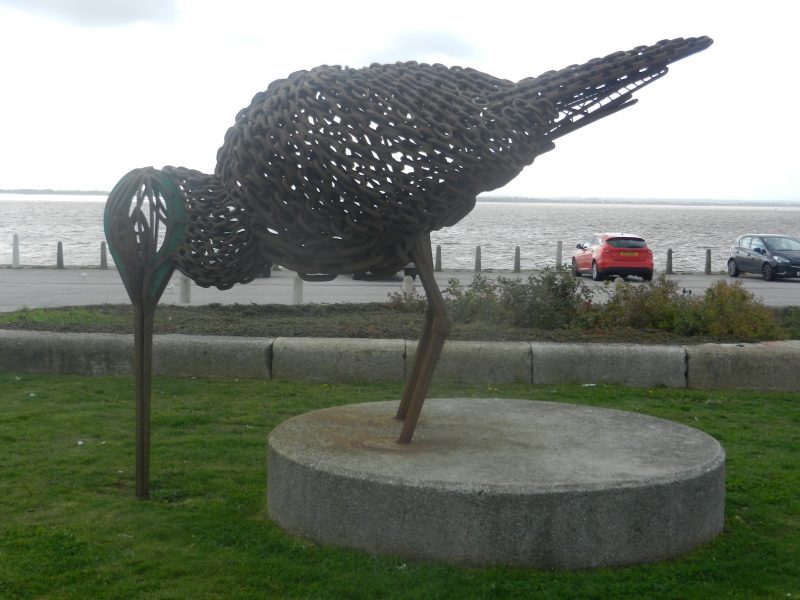
At the end of the public access road running down the western edge of King George Dock is this ‘installation’. It is large in size and initially weird until it becomes clear what it is. It is a representation of a curlew (possibly a whimbrel, but less likely) and appropriately shows it penetrating the Humber mud with its long beak for crustacea on an ebb tide and with its feet not visible as if standing in shallow water. It is constructed from chains mostly and thus represents the dockland environment. It is the only statue-like art installation I can say I like, it reflects its site and the general Estuary environment, and does so accurately. The eerie call of the curlew is as evocative of estuary environments as is the call of the gulls.
To complete the walk described in the last blog – the promenade along the edge of King George Dock can be walked although the all-metal footbridge over the access road to the North Sea Ferry (s.p.b.) is challenging to those with ‘no head for heights’. If the ferry is in dock, which it usually is during the day, then its massive structure dwarfs bankside structures. The promenade path continues beyond the ferry terminal with industrial and dockside goods and structures separated from the walker by a security fence. The entrance lock to King George Dock is crossed by a footbridge with an alarmingly uneven metal grid floor. This is the only lock to cross because Queen Elizabeth Dock is an eastwards extension of King George Dock. The path continues around the edge of Queen Elizabeth Dock but with no access to Hedon Road the walker has to return the same way. It is a strange place to be, unlikely to be any other walkers and despite the environment surprisingly quiet, almost un-nerving.
To continue east along the north bank the walker has to travel round to the mouth of Hedon Haven which can be accessed off the road to Paull, thus avoiding the waterfront of the Saltend complex.
(to be continued)